What is polyethylene pellets and where is it used?

In our article we will talk about the features of granular polyethylene and the scope of its use. Let us dwell in more detail on the methods of its production and recycling.
Peculiarities
Granulation is the final stage of any technological stage in the manufacture of ethylene polymers. The overwhelming majority of all polyethylene is produced in the form of granules, that is, solid particles of certain dimensions.
The granulation technique helps to solve three problems at once:
- finishing of polymers - removal of residues of additives and chemical solvents, improvement of the mechanical characteristics of the material, degassing, as well as homogenization;
- giving the product performance characteristics, necessary for a more rational use of polyethylene in the creation of plastic products;
- creation of materials with all kinds of additives capable of change the parameters of chemical stability, density, optical, and dielectric properties of polyethylene.

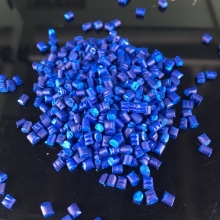

Polyethylene in the form of granules has significant advantages in comparison with flake and powder.
- Reduction of volume by half (the density of bulk polyethylene in powder and granular forms is 0.20-0.25 g / cc and 0.5-0.6 g / cc, respectively). This allows you to significantly reduce the costs of warehousing, movement and packaging of the product.
- High flowability - the use of granules does not create any problems during packaging, as well as transportation. Plastic granules do not stick to the walls of equipment, do not collect in the nodes of transport mechanisms, do not electrify and do not form "dead zones" that cause instability of production processes and shutdown of technological equipment.
- Minimizing the loss of presentation - polyethylene granules are poured out of containers and loading mechanisms in full.
- Low susceptibility to photoaging and destruction... Reducing dust generation during production to zero and, as a result, improving working conditions.



After drying and all tests for compliance with product quality requirements, granular polyethylene is packed in 25 kg bags and marked. In accordance with GOSTs, granules from a batch must have the same geometry and size in all directions within the range of 2–5 mm, be equally colored. Each batch may contain granules of 5–8 mm and 1–2 mm in volume not exceeding 0.25% and 0.5%, respectively. Elements with pronounced defects (foreign inclusions and a rough surface due to polymer degradation) are rejected.
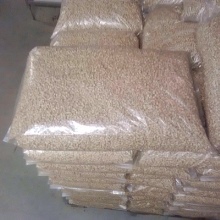


Areas of use
The sphere of application of granular polyethylene covers more than 80% of all areas of polyethylene use in general. Let's list the most common areas.
- Production of films of various shapes and sizes... For this, the granules are loaded into a special hopper, heated and mixed. As a result of all the manipulations, a molten mass is obtained. From it, a film of a given thickness is produced by extrusion. The round head extruder is widely demanded in the industry. This method allows you to get a sleeve that can be used for further bag making.
- Container production. Packaging materials such as pots, crates, bottles, and similar items are produced using injection molding and other molding techniques. In this case, granular polyethylene is vacuum formed - this method is considered the most economically viable and practical.
- Creation of electrical insulation from polyethylene of special cable brands. This method is similar to the first one: the granules are melted and mixed until homogeneous. The insulating material of the required shape is then produced using an extrusion process.
- Production of foamed polyethylene (polyethylene foam). It is one of the most popular thermal insulation materials. For its release, a melt of granular polymers is also used.
- Production of elements of the body of vehicles and other products requiring high strength... For this, polyethylene granules of special grades are molded using injection molding.



Granulators and other equipment
The production of granular polyethylene includes several stages.
Initially, the raw material undergoes preparation, that is, grinding. Depending on which category the processed material belongs to, there are several types of shredders:
- samples for polymer films - optimal for residues of polypropylene, acrylic, as well as nylon, PVC and other similar products in film form;
- mills - suitable for processing thin plastic products, such as PET bottles;
- crushers - are necessary for crushing massive products, such as PVC balcony and other overall structures.
The prepared raw materials are washed, for this they use "wet crushers",
Functionally, they can combine grinding of raw materials with washing.


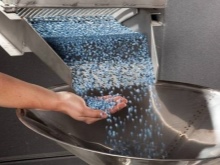
Excess moisture is removed using drying units, as a rule, they are used:
- centrifuges;
- drying with heated air;
- drying with compressed air;
- spin-presses;
- screw type water separators.
Shredded, cleaned and dried plastics may contain polymer residues because initial sorting by hand does not provide 100% separation... To remove all unnecessary elements, specialized separating mechanisms are introduced into the structure of production lines for plastic processing.

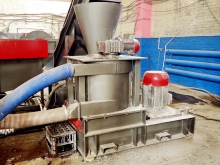

Let's describe the most common technologies for separating plastic chips.
- Flotation separation... The method is based on the difference in the wetting parameters of the materials to be separated. To perform separation, the prepared mixture enters a container with oxygen-enriched water. The particles of the hydrophobic material are immediately covered with air bubbles and float. Hydrophilic materials accumulate at the bottom of the tank.
- Electrostatic separation. This method is based on the difference between materials in terms of electrical conductivity and susceptibility to the accumulation of static electrification of the surface. In the course of processing, particles of the material undergo intensive mixing, as a result of friction, their surface is highly electrified and thus acquires an electric charge of a certain magnitude. Separation allows you to separate materials with different characteristics in an electric field.
- Photometric separation... The operation of this mechanism is based on the separation of plastic according to optical characteristics, that is, reflectivity and color.
Installations of this type are equipped with special emitters of electromagnetic signals, as well as high-sensitivity sensors.



The final stage in any process for the manufacture of granular plastic is directly granulation, for this, a polyethylene granulator is used. This equipment allows you to solve several problems at once:
- give finished products a presentation;
- to obtain composite materials with various additives.
A polyethylene granulator works similarly to an extruder.Plastic blanks in it are mixed by means of special moving screws, and also pass through zones that differ in heating temperature. Under the influence of its increased values and from the friction arising during mixing, the mass begins to melt, and the output is fibers with the given cross-section parameters. To prevent them from sticking together, they are irrigated with water. After they are cut with a special device, adhering to a certain length. It is these segments that are called granules. For cooling, the heated granules are placed in an annular pipe filled with water, from there they are transferred to a centrifuge, where the mass gets rid of the liquid component. Then the raw material enters the drying chamber, and at the final stage the dried material is transported to the filling unit.
The polyethylene granulator allows you to transform a bulky polymer into a strong and dense material. The output granules have a uniform shape and size, a uniform structure.
At each stage of granulation, control over the quality of the material obtained is mandatory.

Recycling process
In recent years, there has been a marked increase in the number of manufacturing companies involved in plastic recycling. And the point here is not only environmental problems, but also the prospects of such a business. Polyethylene becomes an ideal base for creating trash containers, all kinds of household containers, plastic panels and other items.
Recycling of films and bags practically does not cause any particular difficulties, since their structure does not change. But this cannot be said about the quality of the product obtained - with each processing cycle, the transparency parameters and the color of the granulate significantly deteriorate.
Accordingly, the scope of further use is also reduced.
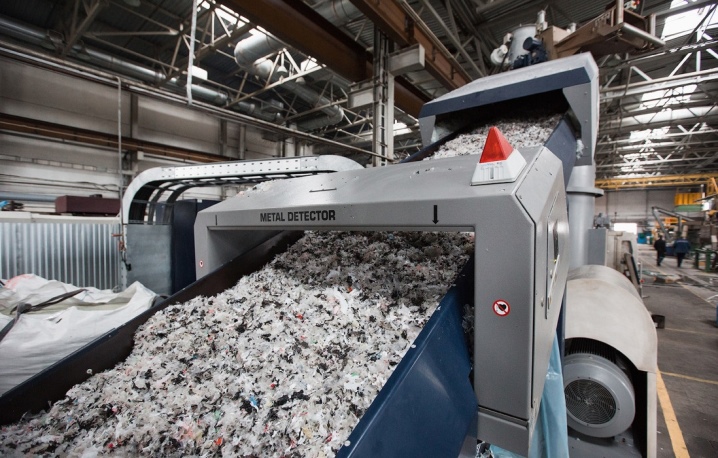
You can learn about how plastic granules are processed at home from the video below.













The comment was sent successfully.